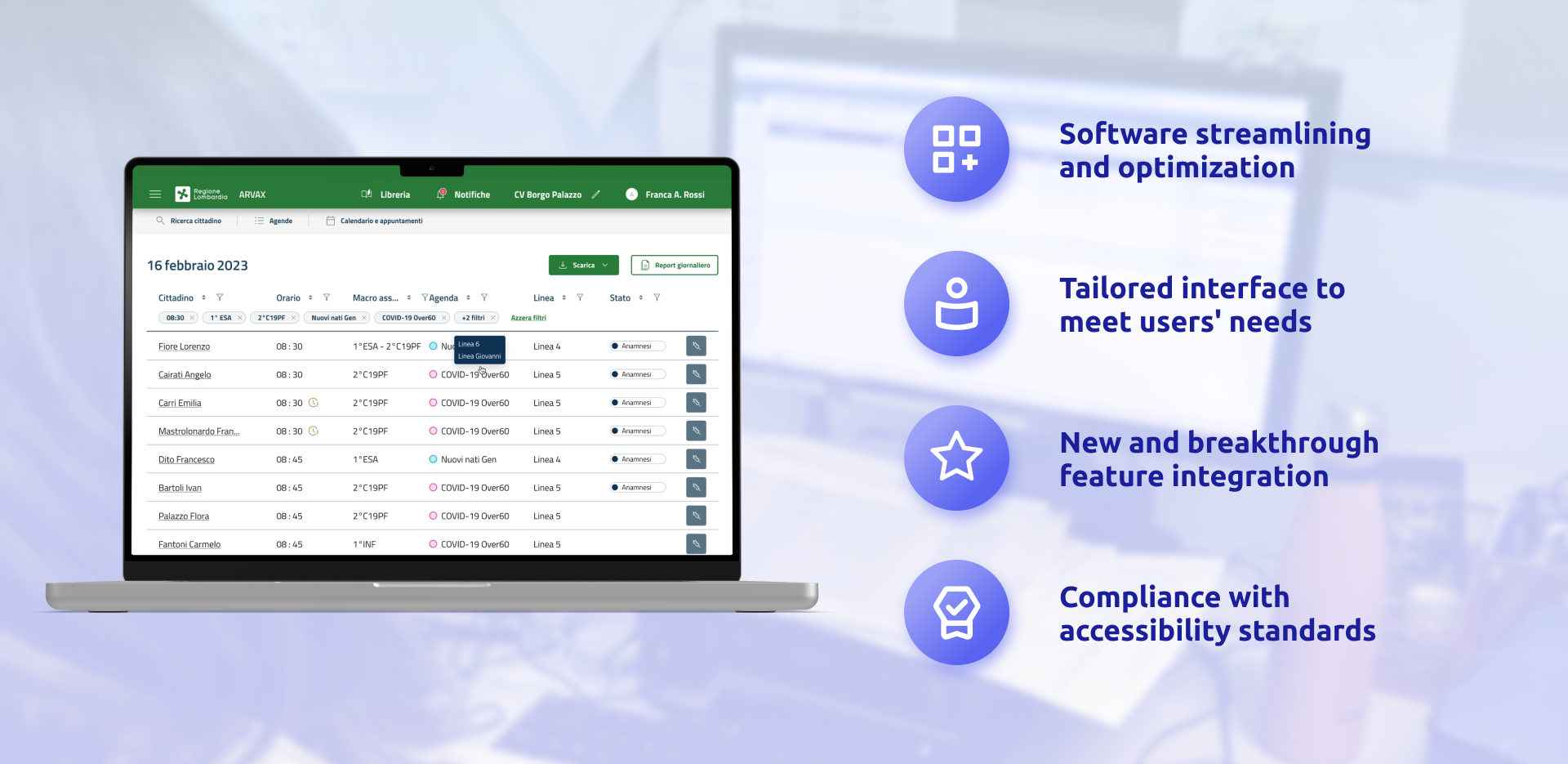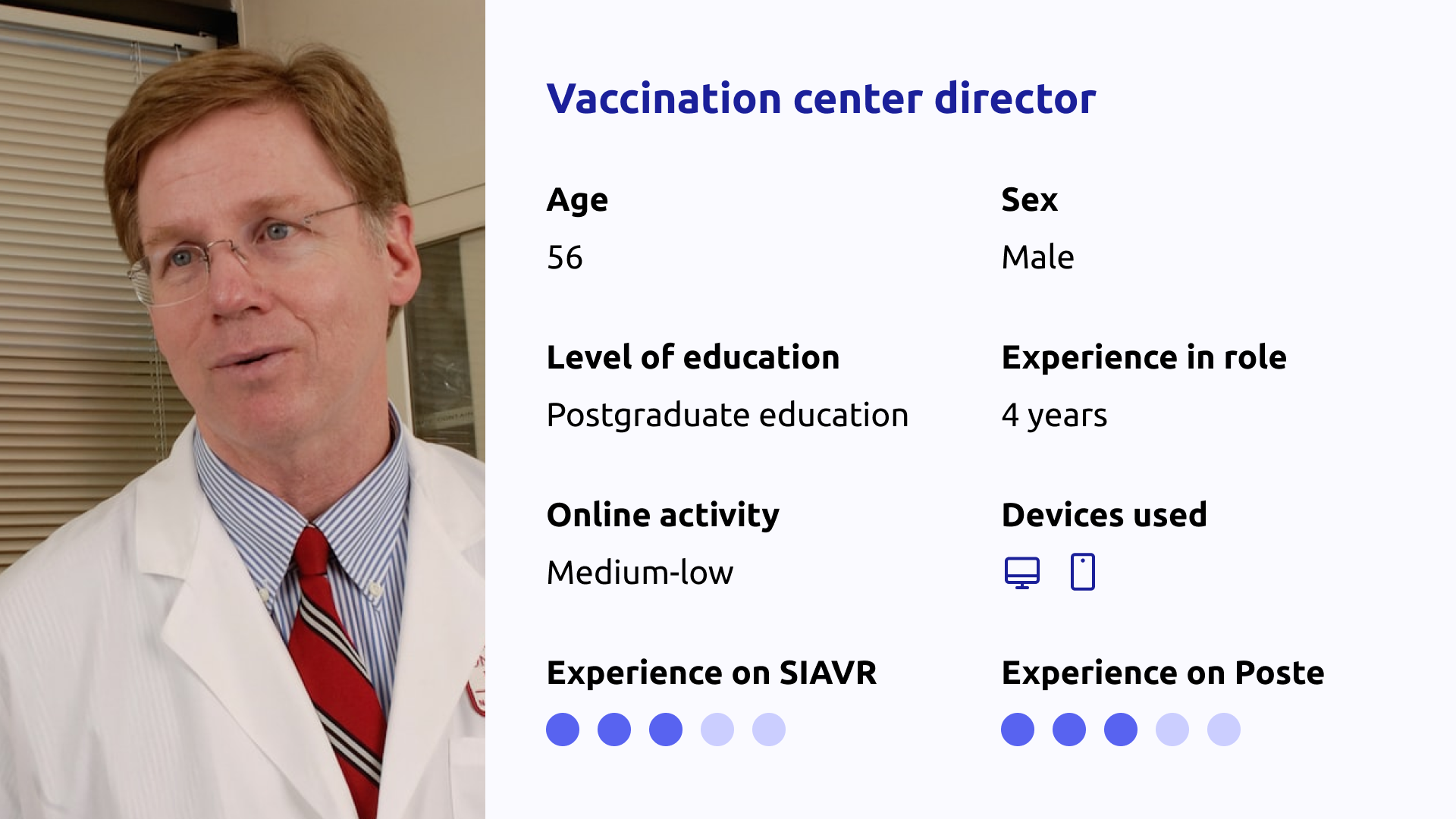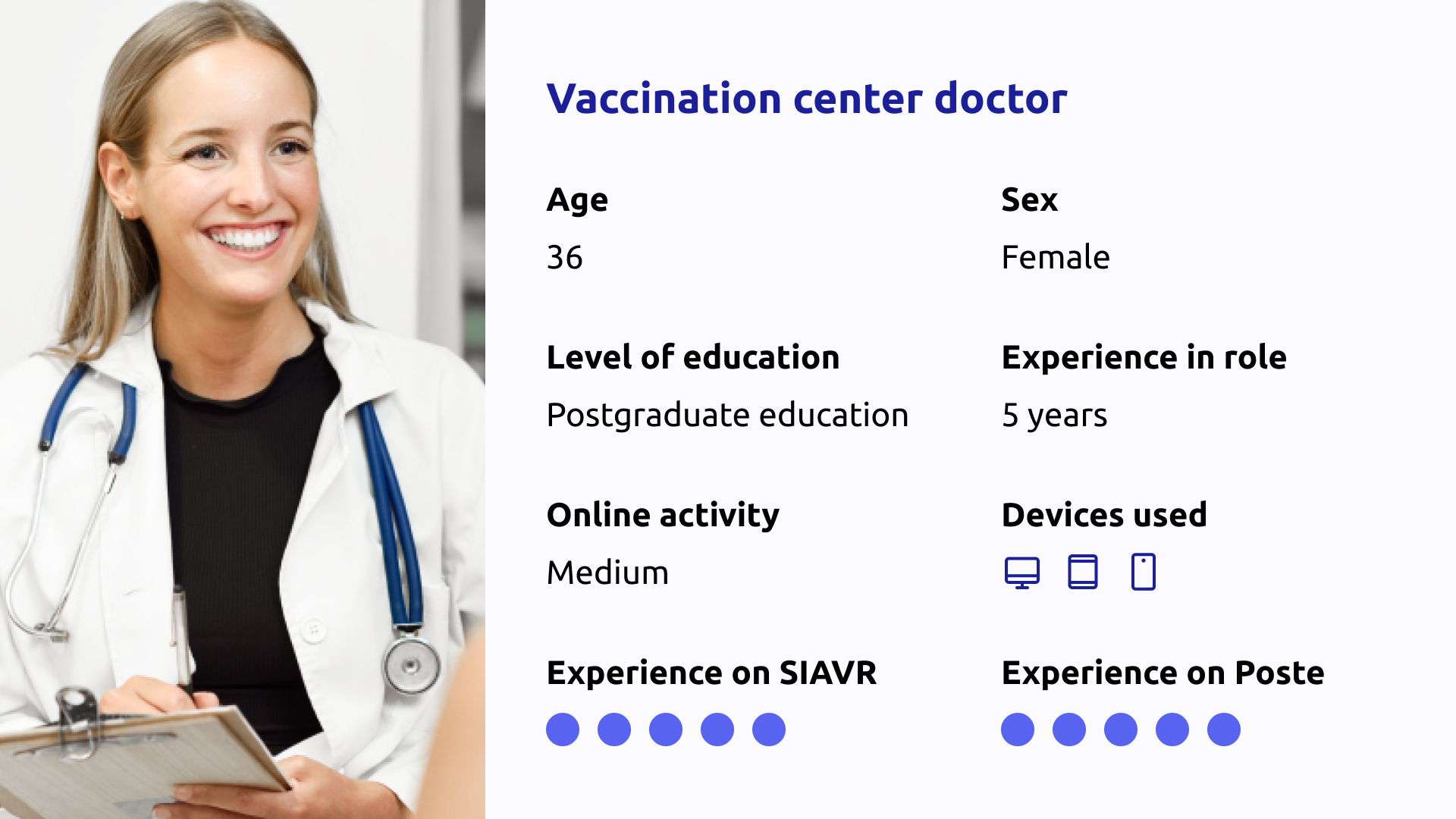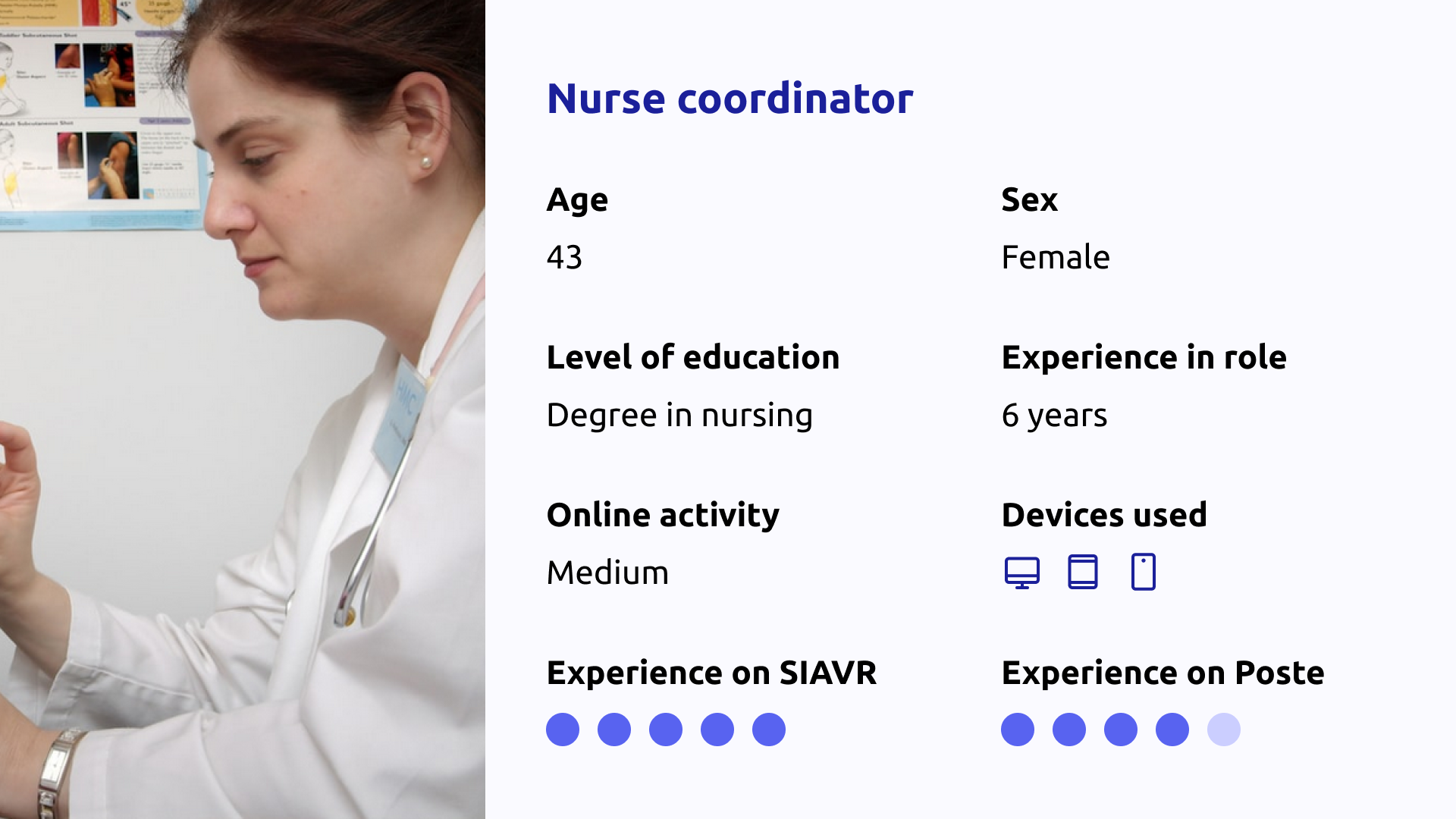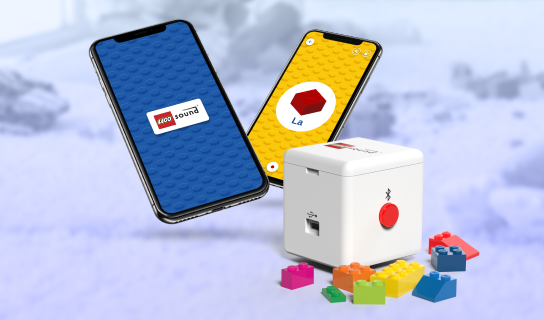ARVAX
ARVAX is a new cloud-based software developed to replace two vaccination management applications in Regione Lombardia that would have been discontinued.
The new vaccination system interacts both with healthcare workers, for the management of vaccination centers and facilities in the vaccination area, and with citizens (10.02 millions in 2024) who want to book an appointment.

Design duration: 11+ months

Main project team: 1 Project Manager, 1 UX Lead, 2 UX/UI Designer, 2 Functional Analysts, 1 UX Researcher, Dev team

Skills used: Wireframes, UX design, UI design, UX research, Design System management, Functional analysis

Tools: Figma, Mural, Maze

Employer: PwC

Problem
Regione Lombardia intends to proceed with the deactivation of the information systems currently in use for vaccination management (SIAVR and Poste Italiane) and the implementation of ARVAX, the new regional vaccination system with the aim of including the management of all vaccination operations in a single system.
SIAVR:
- Obsolete technology
- Poor User Experience, complex navigation with counter-intuitive steps
- Latency in some features (e.g., appointment management and reporting)
- Process lack of flexibility
Poste Italiane:
- Maintenance and licensing costs
- Limited functionalities
- Data extraction issues
- Software ownership intellectual property unavailability
- Privacy waivers granted only in emergency context
Project goals
The objective was to design a new system for managing vaccination operations with an end-user-oriented approach that supports stakeholders involved in managing all processes related to immunization: Scheduling, Vaccination, Provisioning, Citizen registry, Back office and Reporting.
The design intervention of the new interface and user experience started with the creation from scratch of all building blocks, with the objective of:
- Research and collect the needs of users present throughout Regione Lombardia, analyzing current processes and defining a new vision of the future;
- Improve the overall user experience, adapting the new system to usability and accessibility standards and optimize the existing features already offered by the two softwares in use;
- Create a Design System of the platform, a library of components and graphical assets, compliant with the Design Guidelines for Digital Services of Regione Lombardia and AgID, an Italian government agency that coordinates the policies in the field of innovation and digitalization.

Flexible
Adaptable to different modes of work and organization

Modular
A complete system that makes it easy to integrate new features

User-friendly
A comprehensive system that is straightforward and easy to learn

Portable
Works even on mobile devices for home visits

Reliable
Capable of handling emergency conditions in case of massive vaccination campaigns

Co-designed
Crafted together with health workers across the region
UX Research activities
There were many user research activities that took place throughout the project, and they enabled the design of a system that truly met the needs of users. Efforts were made to involve as many users with different roles and from all areas of the region as possible. This allowed to map existing processes (which differed between hospitals) and then standardize them through the new software.
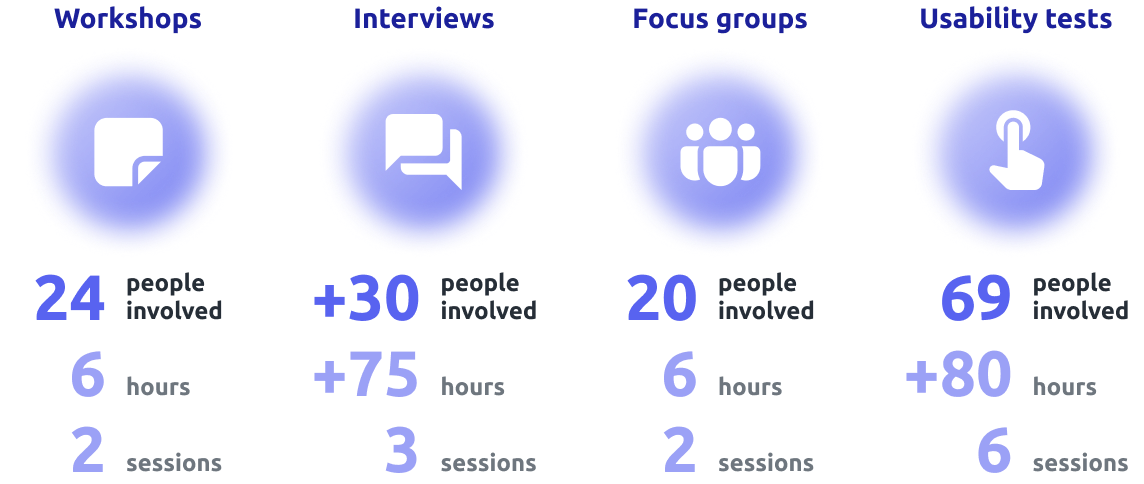

Personas overview
User research activities have produced many types of outputs, including personas. This made it possible to identify the amount of different stakeholders who would interact with the platform (a total of 12 were identified), the main activities they do related to vaccination, its organization and management, and the expectations they have of the new software.
Patient journey
The sequence of activities related specifically to each identified personas were explored in depth. This allowed the detection of the most critical points and areas for improvement where the system could act effectively.

Information architecture
The creation of the information architecture was one of the most complex tasks, as there were many different contents and functionalities to be included. A clustered and branched approach was adopted, in which the home serves as a hub for the functionality present, grouped into macro tasks.

Design System
Given the large number of functions to be integrated in a very limited time, it was decided to use AGID’s Design System Italia as a starting point. This made it possible to keep aligned with the usability and accessibility standards defined by law and optimize design timeline.
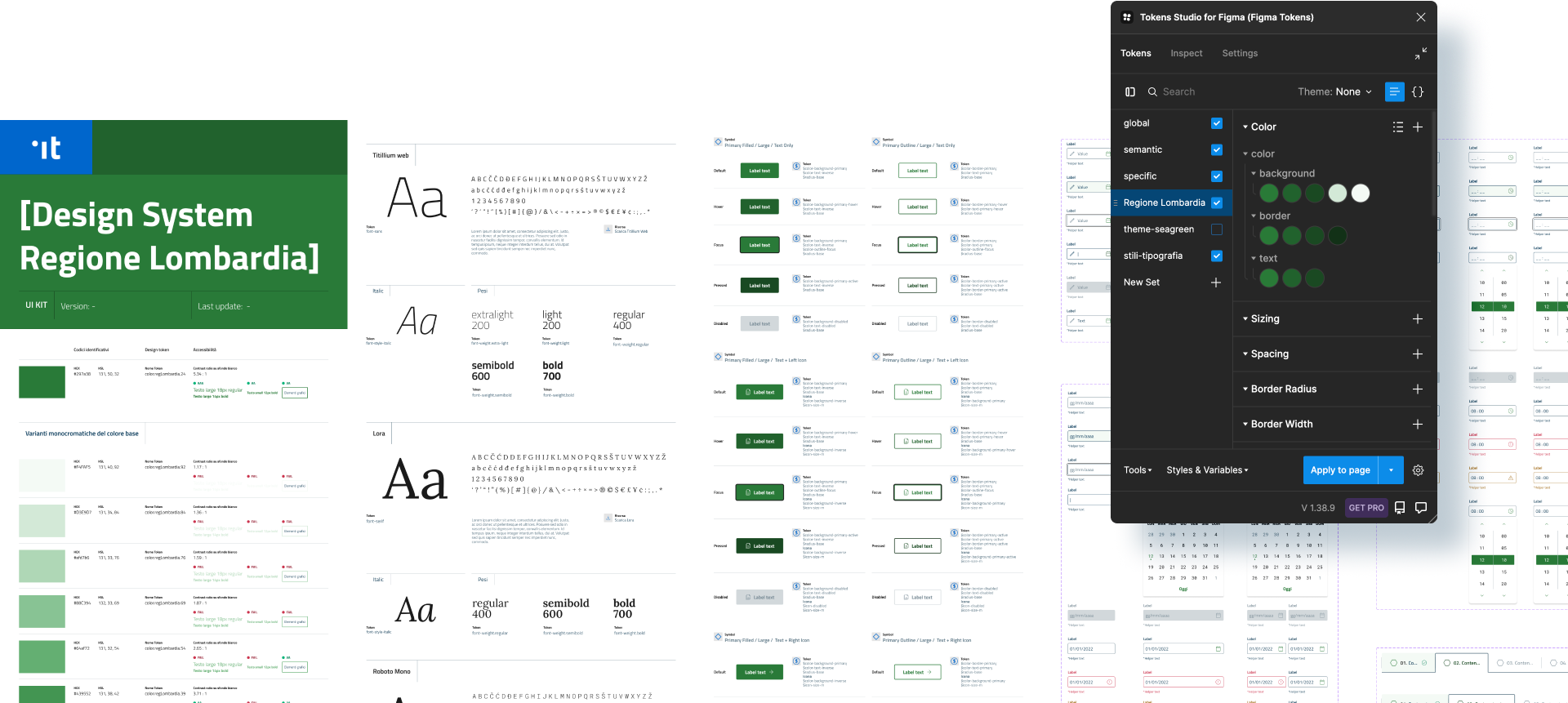
Citizen registry
In this section, healthcare workers can read all the data of citizens assisted by the regional healthcare system. The large amount of information has been divided into six tabs based on the tasks users perform when they visit this page. Data to identify the patient and some quick actions to initiate task flows are always visible at the top.
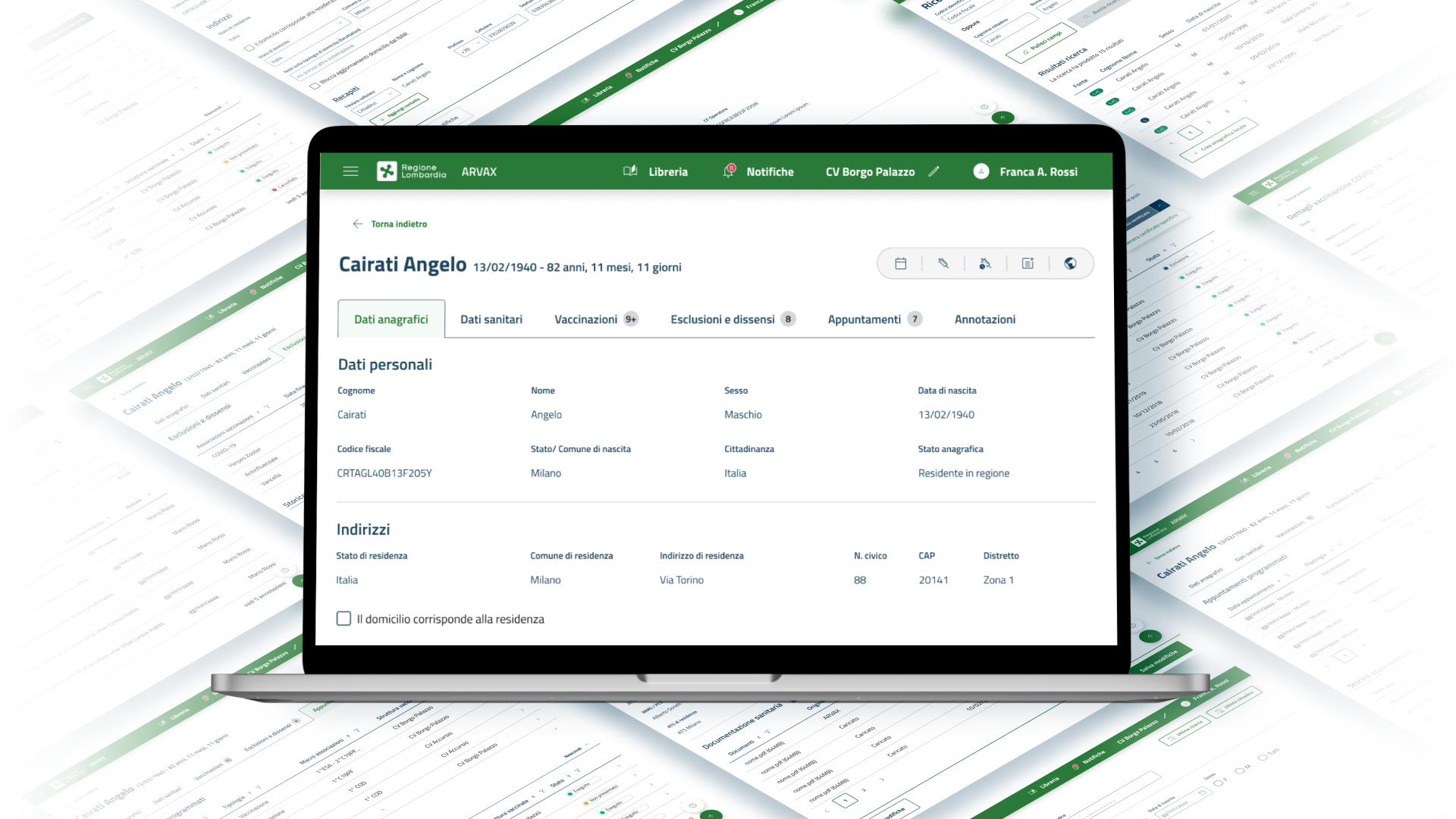
Scheduling
In this area, users can manage the scheduling of citizen appointments for vaccinations. Users have the ability to create multiple agendas and be able to see all appointments on one page. This has proven to be very useful for health care providers who need flexible software that meets all needs and scenarios.
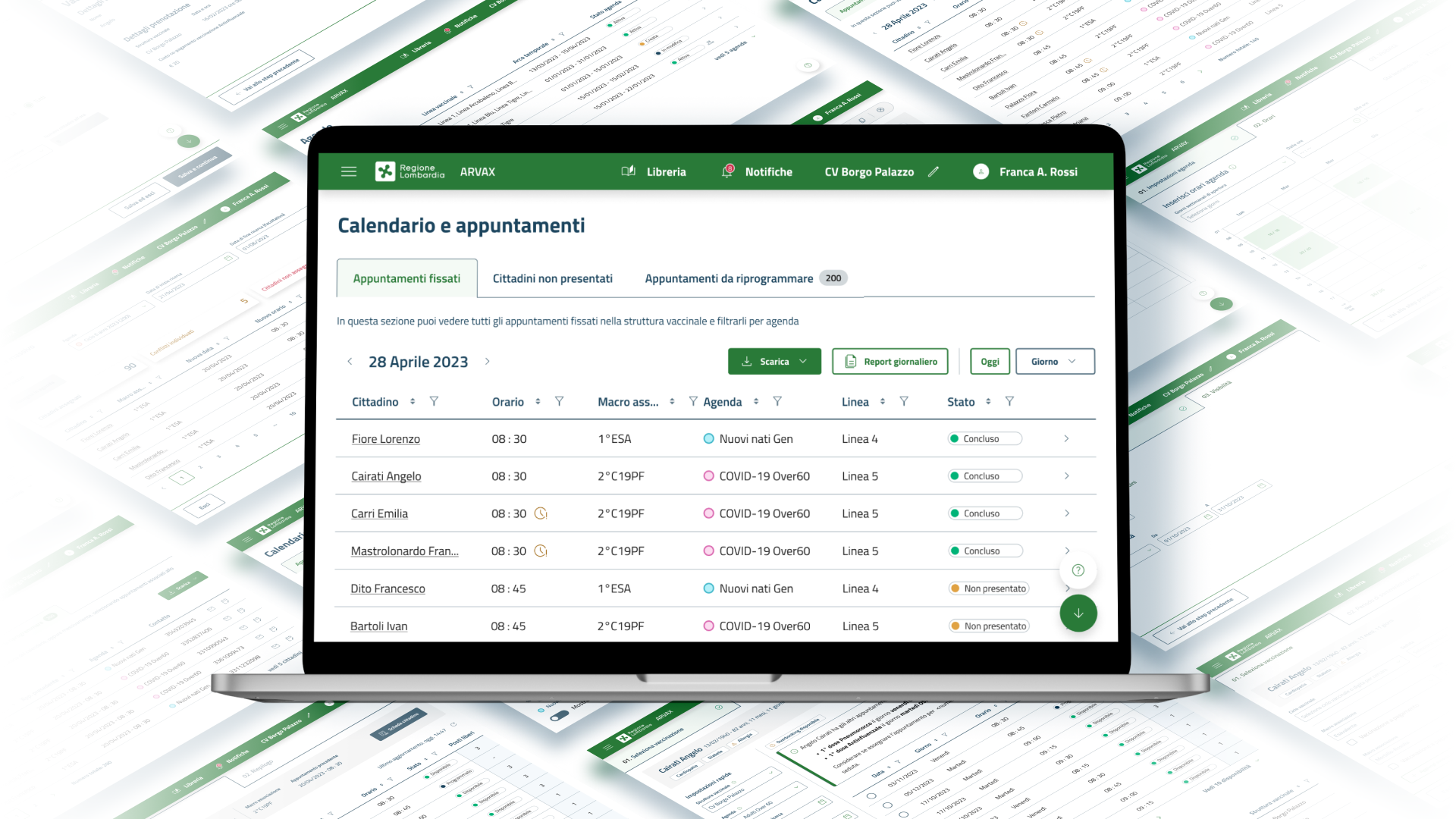
Vaccination
The vaccination flow is divided into 3 stages that support information gathering during the citizen’s stay in the vaccination center. The steps that may be visible will depend on the role of the operator and the data entered in the previous steps. The goal was to speed up operations while reducing the probability of error.
1. Check-in
The patient comes to the vaccination center, and the administrative assistant must verify the citizen’s identity and confirm their attendance.
In some cases, payment to get the vaccination must also be recorded.
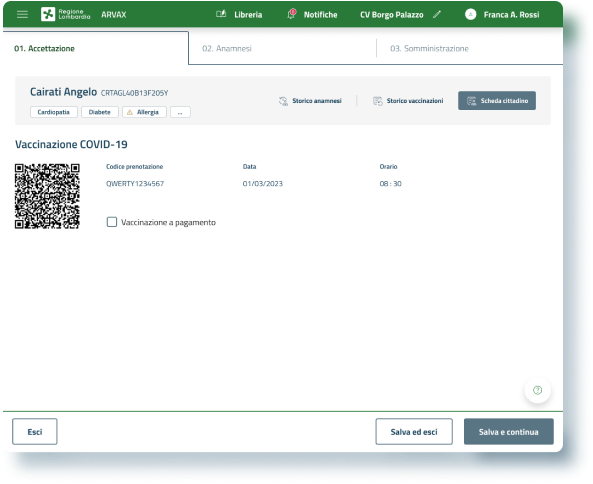
2. Patient medical history check
When their turn comes, the doctor will have to review the medical history and make sure there are no contraindications for the vaccines that will be administered.
Some values will already be filled in based on the citizen data in the system, and the software will flag any conflicting data.

3. Vaccine administration
The nurse prepares the vaccines that will be administered, reporting the healthcare workers attending, time and place, and data on each shot, such as the batch and site of inoculation.
At the end of the process, the system makes it easy to book the next vaccination according to the vaccination schedule.
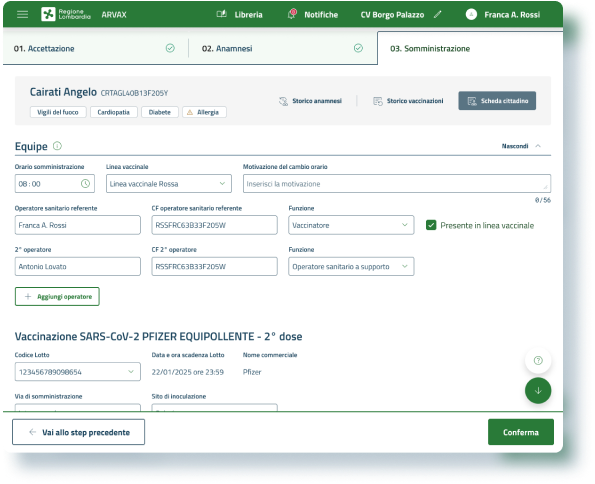
Provisioning
In the provisioning part, users can manage and monitor everything about individual vaccine packages so that they are available for scheduled appointments - from ordering to central pharmacy, to receiving and uploading to the system, to consuming and removing from the availability statistics.
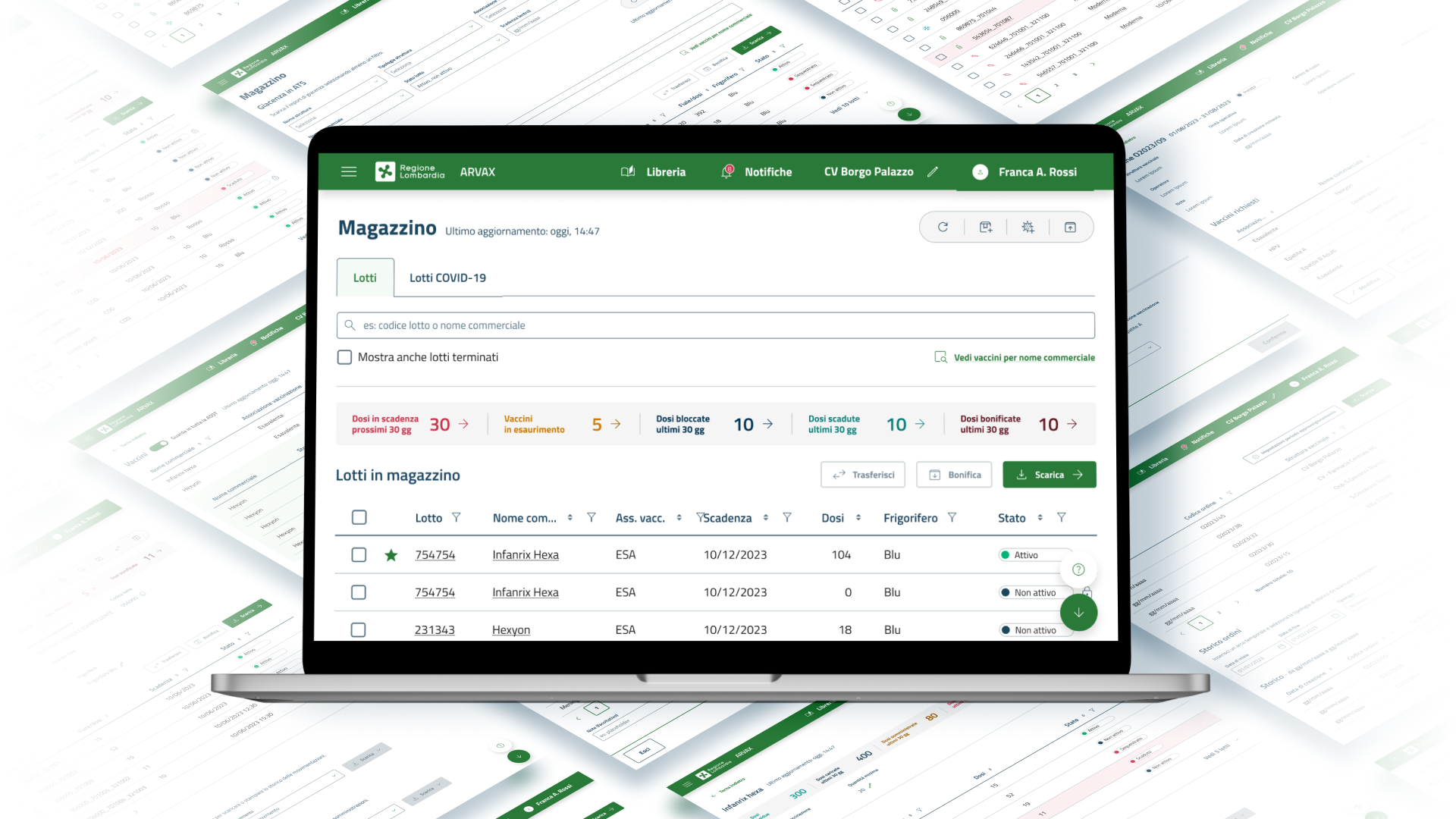
Strenght points
The Regione Lombardia’s new vaccine system, resulting from the need to manage all operations in a single software, brings many benefits. Working closely with users, the software was created based on their operative needs, integrating innovative features that make their work easier. The flow optimization and the adherence to accessibility standards made it robust and long-lasting, able to be used even in emergency settings.
